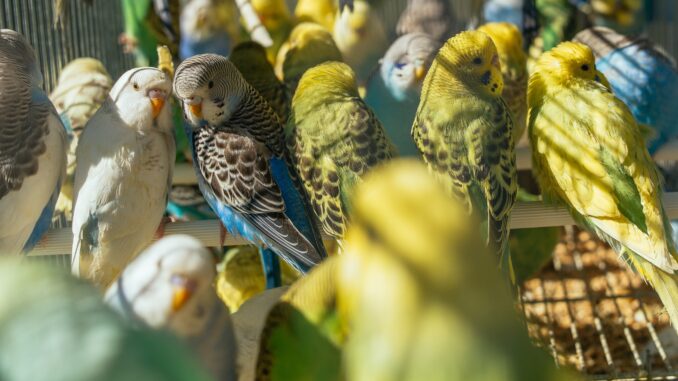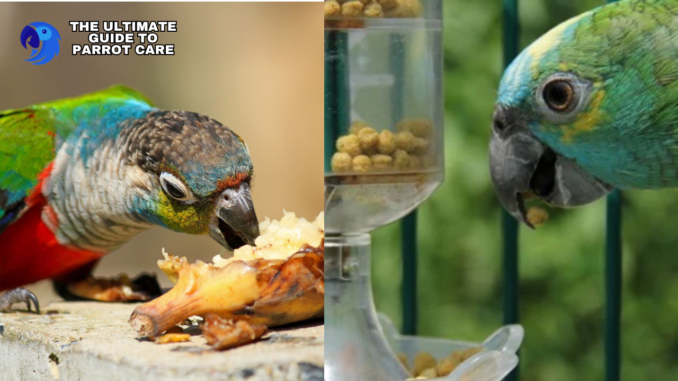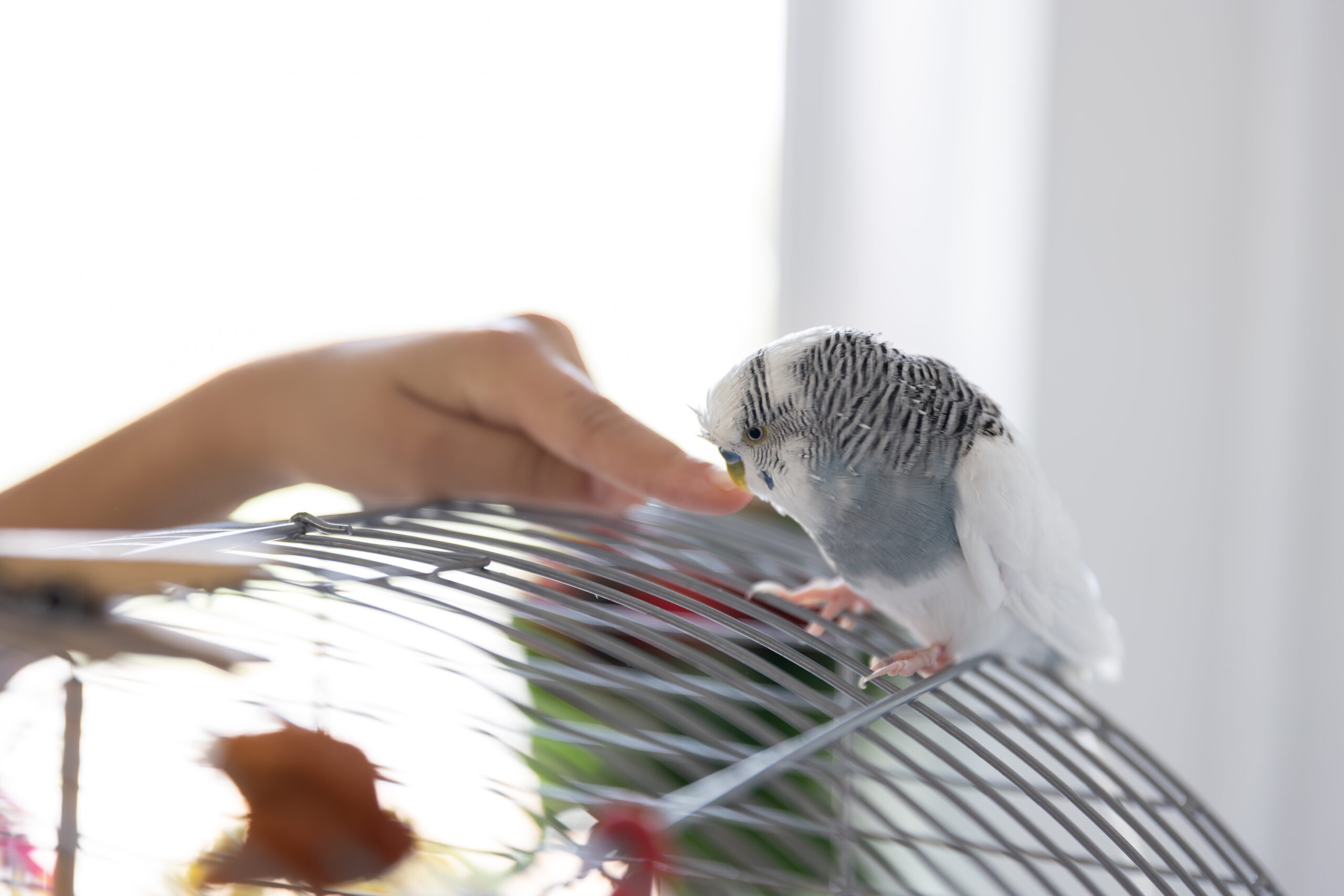
Essential Tips for New Parrot Owners

Creating the Perfect Parrot Habitat
- Choosing the right cage size and design
When it comes to parrot cages, bigger is always better. Your feathered friend needs room to stretch those wings! For example, a medium-sized parrot like an African Grey requires a cage at least 24″ x 24″ x 36″. Bar spacing is crucial too – you don’t want your little escape artist squeezing through!
- Setting up perches and play areas
Variety is the spice of life for parrots. Mix the perch materials – wood, rope, and even natural branches. I once used a clean, sturdy branch from my backyard apple tree, and my parrot loved it! Just make sure to sanitize any outdoor finds first.
- Proper lighting and temperature control
Parrots need their beauty sleep too! Aim for 10-12 hours of darkness each night. During the day, natural light is best, but if that’s not possible, full-spectrum bulbs work well. Keep the room between 65-80°F (18-27°C). I always say, “If you’re comfortable, your parrot probably is too!”
Common Health Issues and Prevention
- Recognizing signs of illness in parrots
Keep an eye out for changes in behavior, appetite, or droppings. Fluffed feathers, tail bobbing, or sitting at the bottom of the cage are red flags. Trust your gut – you know your bird best!
- Implementing a regular health check routine
Get hands-on with your feathered friend. Weekly weigh-ins and gentle physical examinations can catch issues early. I like to make it a bonding experience – lots of praise and maybe a little treat afterward!
- Maintaining proper hygiene in the parrot’s environment
Clean that cage daily and do a deep clean weekly. Use bird-safe disinfectants and rinse thoroughly. Fresh food and water are a must. Remember, a clean cage is a happy parrot!
Establishing a Daily Care Routine
- Feeding schedule and techniques
Consistency is key. Offer fresh food in the morning and remove uneaten portions before bedtime. I like to make mealtimes interactive – hiding bits of food in foraging toys keeps my parrot entertained and well-fed.
- Grooming and bathing practices
Most parrots love a good splash! Offer a shallow water dish or a gentle misting a few times a week. Some birds prefer “shower perches” in human showers – just keep the water lukewarm and the pressure low.
- Exercise and social interaction time
Out-of-cage time is crucial. Aim for at least a few hours daily in a bird-proofed room. Join in the fun with games or training sessions. My parrot and I have a daily “dance party” – it’s great exercise and lots of laughs!
Parrot Behavior and Training
Understanding Parrot Body Language
- Interpreting vocalizations and sounds
Parrots are chatty creatures! Learn to distinguish between happy chatter, alarm calls, and attention-seeking screams. My parrot has a special “hello” chirp just for me when I come home – it’s the sweetest sound!
- Recognizing stress and comfort signals
Watch those feathers! Relaxed feathers mean a happy bird, while raised feathers can signal excitement or aggression. Eye pinning (rapid pupil dilation) can mean your parrot is interested or upset – context is key.
- Reading facial expressions and feather positions
Parrots are more expressive than you might think. A slightly open beak and half-closed eyes often mean a content, sleepy bird. Fluffed cheek feathers usually signal a happy, relaxed parrot.
Effective Training Techniques
- Positive reinforcement methods
Treats, praise, and attention work wonders. Never punish your parrot – it’ll only damage your bond. I’ve found that clicker training, paired with favorite treats, can be incredibly effective.
- Step-up and recall training
Start with short distances and lots of encouragement. Use a consistent command like “step up” or “come.” Practice makes perfect – my parrot now flies to me from across the room on command!
- Teaching basic tricks and commands
Start simple with “wave” or “turn around.” Break tricks into small steps and reward progress. Remember, some parrots learn faster than others – patience is key!
Addressing Common Behavioral Problems
- Managing excessive screaming and noise
Identify the cause – is your parrot bored, hungry, or seeking attention? Provide plenty of mental stimulation and ignore attention-seeking screams. It’s tough, but consistency pays off.
- Reducing aggression and biting
Respect your parrot’s body language and personal space. If biting occurs, a firm “no” and brief time-out can help. Never hit or yell – it’ll only make things worse.
- Dealing with feather plucking and self-mutilation
This is often a sign of stress or medical issues. Consult an avian vet and look for environmental stressors. Increasing foraging opportunities and social interaction can sometimes help.
Parrot Nutrition and Feeding

3.1 Balanced Diet for Optimal Health
- Essential nutrients for parrots
Parrots need a mix of proteins, carbohydrates, fats, vitamins, and minerals. A varied diet of pellets, fresh fruits, vegetables, and some seeds is ideal. Calcium is crucial – cuttlebone or mineral blocks can help.
- Recommended daily food portions
As a general rule, offer about 1/4 to 1/2 cup of pellets per day for a medium-sized parrot, plus a variety of fresh foods. Monitor your bird’s weight and adjust accordingly.
- Safe and unsafe foods for parrots
Avocado, chocolate, and caffeine are big no-nos. Stick to bird-safe fruits and veggies. My parrot goes crazy for apple slices and carrot sticks!
Homemade Parrot Treat Recipes
- Nutritious fruit and vegetable mixes
Try a colorful mix of diced bell peppers, carrots, and berries. Or blend cooked sweet potato with a sprinkle of cinnamon for a tasty treat.
- Healthy seed and nut combinations
A small handful of unsalted almonds, pumpkin seeds, and sunflower seeds makes a great occasional treat. Remember, seeds should be a small part of the diet, not the main course.
- Low-fat, protein-rich snack ideas
Cooked eggs, lean-cooked chicken, or low-fat cottage cheese can be good protein sources. Always introduce new foods gradually.
Feeding Techniques and Tools
- Types of food bowls and dispensers
Stainless steel bowls are durable and easy to clean. Consider separate bowls for dry food, fresh food, and water. Gravity feeders can be handy but monitor intake closely.
- Foraging toys and puzzle feeders
These are great for mental stimulation. Try hiding bits of food in a rolled-up piece of paper or a store-bought foraging toy. It keeps meal times interesting!
- Introducing new foods to picky eaters
Patience is key. Try offering new foods first thing in the morning when your parrot is hungriest. Eating together can also encourage your bird to try new things – my parrot often wants whatever I’m having!
Enrichment and Mental Stimulation

DIY Parrot Toys and Activities
- Recycled material toy ideas
Empty toilet paper rolls stuffed with treats, paper chains, or even old phone books can make great toys. Just ensure all materials are safe and non-toxic.
- Rotational toy system for Variety
Keep things interesting by swapping out toys regularly. I have a “toy box” and rotate items weekly – it’s like Christmas for my parrot every time!
- Interactive games for parrot and owner
Try simple games like “peek-a-boo” or hide-and-seek with treats. Teaching your parrot to sort colored objects can be fun and mentally stimulating.
Creating an Engaging Environment
- Setting up climbing and exploration areas
Rope perches, ladders, and even old tree branches (properly sanitized) can create an exciting jungle gym for your parrot.
- Incorporating natural elements in the habitat
Safe, non-toxic plants like pothos or spider plants can add interest. Just ensure they’re out of beak reach if you’re unsure about their safety.
- Providing visual and auditory stimulation
Parrots love to watch the world go by. A cage near a window (but not in direct sunlight) can provide hours of entertainment. Gentle background music or nature sounds can also be enjoyable.
Social Interaction and Bonding
- Establishing trust through daily interactions
Consistent, positive interactions build trust. Talk to your parrot, offer treats by hand, and spend time near the cage even when not directly interacting.
- Incorporating your parrot into family activities
Let your parrot be part of family time. Mine enjoys sitting on a perch near the dinner table, “helping” with paperwork or watching TV with us.
- Balancing attention and independence
While parrots are social, they also need to learn to entertain themselves. Gradually increase alone time, ensuring plenty of toys and activities are available.
Long-term Parrot Care Considerations
Financial Planning for Parrot Ownership
- Budgeting for food, supplies, and veterinary care
Set aside funds for quality food, toy replacements, and annual check-ups. Don’t forget to factor in potential emergency vet visits – they can be costly!
- Insurance options for exotic pets
Some companies offer exotic pet insurance. It’s worth considering, especially for more expensive parrot species.
- Planning for long-term care and longevity
Remember, parrots can live for decades. Consider their care in your long-term life plans, including provisions in your will if necessary.
Building a Support Network
- Finding a reliable avian veterinarian
Locate an experienced avian vet before you need one. Regular check-ups can catch issues early and save you money in the long run.
- Joining parrot owner communities and forums
Online forums and local bird clubs can be great resources for advice and support. It’s comforting to connect with other “bird people”!
- Arranging for backup care during emergencies
Have a plan for your parrot’s care if you’re unexpectedly away. Teach a trusted friend or family member the basics of parrot care.
Adapting Care as Your Parrot Ages
- Recognizing age-related health changes
Watch for signs of arthritis, vision changes, or decreased activity. Regular vet check-ups become even more important in senior years.
- Modifying diet and exercise for senior parrots
Older parrots may need softer foods or different nutritional supplements. Gentle exercises can help maintain mobility.
- Ensuring comfort in the later stages of life
Consider lower perches, easier-to-navigate cage setups, and extra warmth for your aging feathered friend. Remember, a comfortable parrot is a happy parrot!
Summary
Parrot care is a rewarding journey that requires dedication, patience, and love. From creating the perfect habitat to understanding your feathered friend’s unique personality, every step is an adventure. Remember, each parrot is an individual – what works for one might not work for another. The key is to stay observant, and flexible, and always prioritize your parrot’s well-being. With proper care, your parrot can be a loving companion for many years to come.
Frequently Asked Questions
- How often should I take my parrot to the vet? Annual check-ups are recommended, with more frequent visits for very young or senior birds.
- Can parrots eat human food? Some human foods are safe, but many are not. Always research before offering new foods.
- How can I tell if my parrot is sick? Look for changes in behavior, appetite, droppings, or appearance. When in doubt, consult a vet.
- Do parrots need toys? Absolutely! Toys provide mental stimulation and help prevent boredom and behavioral issues.
- How long do parrots live? It varies by species, but many parrots can live 20-50 years or more with proper care.

Leave a Reply